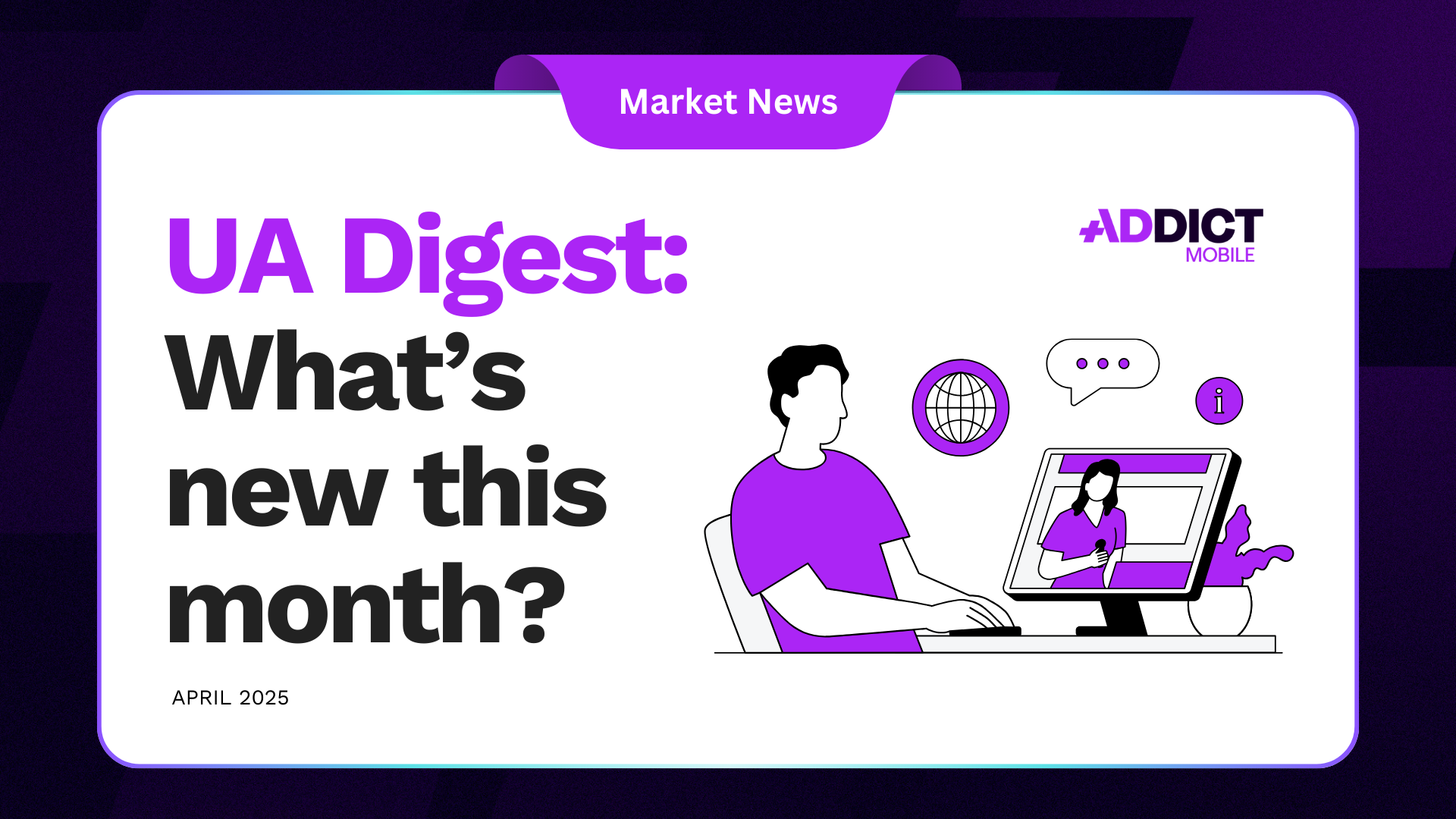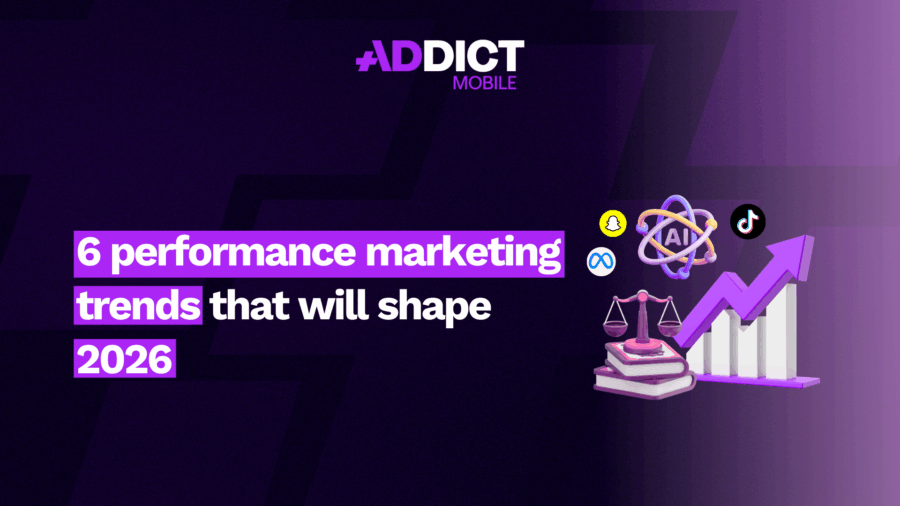UA Digest #6: What’s new this month?

Discover our User Acquisition Digest, your monthly update on the latest trends and news in mobile marketing and user acquisition!
Apple Search Ads becomes Apple Ads: just a rebrand?
Apple has officially renamed its ad platform: Apple Search Ads is now Apple Ads. While the change may seem minor, it signals a broader ambition, positioning Apple as a full-fledged advertising player, beyond App Store search.
What it means for the ecosystem:
- Consolidated formats
Apple Ads now brings together all existing placements: Search Results, Search Tab, Today Tab, Product Pages, as well as display formats across Apple News and Stocks. This rebranding could pave the way for expansion into Apple TV or Podcasts.
- A closed but expanding ecosystem
Apple is building a proprietary ad stack, with its own tools (AdServices API, SKAN), its own attribution rules, and limited access to data. It’s a clear “privacy first” approach, one that protects users, but adds complexity for advertisers.
- A clear growth strategy
As highlighted by Mobile Marketing Reads, the shift comes as Apple looks to diversify revenue streams in response to slowing iPhone sales. Still small compared to Google or Meta, Apple’s ad business is becoming a strategic lever, with clear signs like AI-powered optimization tools and recruitment from TV advertising sectors.
In line with the recent SKAN integration, this rebrand confirms Apple Ads is scaling up. For iOS advertisers, it’s a reminder to fully understand the specific dynamics of Apple’s ecosystem, and stay ahead of its evolution.
Apple Ads now supports SKAdNetwork
Since April 10, Apple Search Ads campaigns are now compatible with SKAdNetwork. A long-awaited move that marks a significant shift in how performance is measured on iOS.
What’s changing
- ASA campaigns integrated with SKAN 1–3
This first rollout includes Search Results, Search Tab, Today Tab, and Product Pages placements. Only click-through attribution is supported at this stage, with no post-view and no SKAN 4 support yet. Advanced features are expected in future updates.
- A step toward unified attribution
Until now, ASA operated via Apple’s AdServices API, using a separate attribution system. SKAN integration finally allows for direct comparison with other media sources, aligning performance analysis across channels.
- Expect discrepancies in reporting
Because SKAN attribution is more limited (24-hour window, no post-view), ASA conversions may appear underreported compared to historic dashboards. A drop in ROAS under SKAN doesn’t always mean a real drop in efficiency.
- Potential impact on other channels
Since ASA often appears at the end of the user journey, it may now claim a larger share of SKAN attribution, potentially reducing the credit given to other sources. A dynamic to watch closely when managing budgets.
- Technical adjustments required
Make sure postbacks are correctly forwarded to your MMP, and consider revisiting your conversion value schema to better reflect the actual impact of ASA.
It’s not a perfect setup yet (no SKAN 4, limited windows, no post-view), but this update brings more consistency to iOS performance tracking and will require strategic and technical adjustments.
FTC vs Meta: a case with direct implications for UA
A landmark trial is underway between the Federal Trade Commission (FTC) and Meta. At the heart of the case are Meta’s acquisitions of Instagram (2012) and WhatsApp (2014), described by the FTC as “killer acquisitions” aimed at eliminating competition.
Why this matters for user acquisition
If the FTC wins, Meta could be forced to break up its platforms, which would have a major impact on its advertising ecosystem:
- No more unified targeting across Facebook, Instagram, and WhatsApp
- Fragmented audiences
- Less efficient UA campaigns
- Potentially higher acquisition costs
In 2024, Meta accounted for over two-thirds of social media ad spend in the US. Any structural shift to its ecosystem should be taken seriously by advertisers.
This case also marks a regulatory turning point, as it’s the first major move under the newly appointed FTC leadership. Even under a pro-business administration, Big Tech remains under scrutiny. And this isn’t an isolated case, Google is also facing a ruling over its ad tech monopoly.
Bottom line: This environment is a clear reminder for UA professionals: stay diversified, stay agile, and keep a close eye on Washington.
Gaming apps: key UA trends to watch in 2025, according to Adjust
The 2025 edition of Adjust’s Gaming App Insights Report is out, and the message is clear: mobile gaming is entering a new phase of growth and innovation.
The report outlines the strategic levers to scale in 2025:
- AI is becoming essential for improving UA performance, personalizing user experiences, and driving predictive monetization.
- Hybrid monetization is the new standard. In-app purchases, ads, subscriptions, all are combined to maximize lifetime value.
- Cross-platform play is now expected in key genres like FPS, MOBA, and sandbox, boosting both retention and revenue.
- New acquisition channels are on the rise. Alternative app stores, influencer campaigns, CTV, and webshops are creating more fragmented, yet richer UA strategies.
- And finally, the report provides benchmarks on top-performing subverticals, offering valuable insights for decision-making.
This is a must-read resource to sharpen your UA strategy in gaming for 2025, choose the right formats and channels, and stay ahead of the curve. Read the full report.
DMA: First EU Sanctions Against Apple and Meta
The European Commission has issued its first fines under the Digital Markets Act (DMA), a new regulation introduced in 2023 to oversee digital gatekeepers. Apple was fined €500M and Meta €200M for non-compliance.
- Apple was penalized for restricting user redirection to external payment options, despite DMA requirements. The result: excessive commissions, limited competition, and increased pressure on monetization strategies outside the App Store.
- Meta was fined for its “ads or subscription” model, which the Commission deemed non-compliant as it failed to offer users a meaningful choice regarding data use for advertising.
Both companies have announced their intention to appeal.
What it means:
- A strong signal against closed monetization ecosystems
- A challenge to dominant business models
- A clear warning to other key players (Google, X…)
- Potential impact on ad costs and conversion flows
While the fines are moderate in size, they mark a shift toward stricter, faster, and potentially more restrictive EU enforcement, especially relevant for UA strategies on iOS.
NEWS
Article in relation

6 performance marketing trends that will shape 2026
2026 is shaping up to be a pivotal year for performance marketing. With new growth channels emerging, AI-driven automation accelerating, evolving measurement models,...
Published on 2 December 2025
Best ASO tools to grow your app store…
– by Oriane Ineza, Content Marketing Specialist at AppTweak In an increasingly competitive app market, visibility is everything, and a solid, comprehensive set...
Published on 30 November 2025
UA Digest #11 : What’s new this month?
Discover our User Acquisition Digest, your monthly update on the latest trends and news in mobile marketing and user acquisition! AppsFlyer unveils eight...
Published on 26 November 2025

